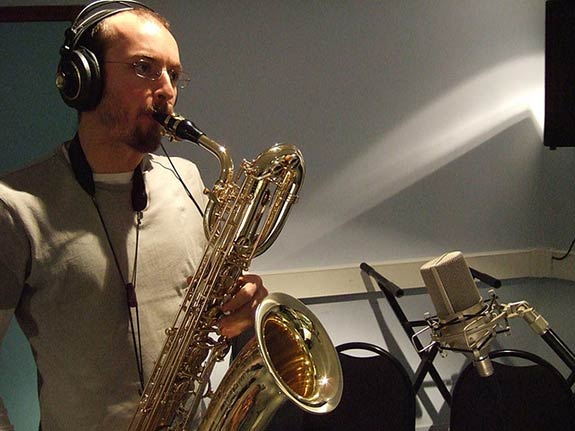A Simple Ear Training Exercise You Can Do Anytime, Anywhere

This article is the second of a two-part series on ear training brought to you by Scott Edwards of Ear Training HQ. Click here to read the first installment.
A big part of ear training involves working on dedicated ear training exercises. These exercises focus on individual sounds (whether it’s intervals, scale degrees/solfege or chords) so you can learn to identify them in music.
These exercises are important, but there’s another type of ear training exercise that most musicians don’t spend much time on, and that can make the difference between ear training success and ear training failure and frustration.
I call these exercises ‘applied ear training exercises’. Applied ear training exercises differ from more standard ear training exercises because they use recordings of real music.
Applied ear training is unbelievably beneficial because it takes the skills you develop with your other ear training and puts them to the test in a real musical context.
So I’d like to introduce you to applied ear training today with a simple, but incredibly useful applied ear training exercise.
And when I say the exercise is simple I really mean it. The exercise is this:
When you’re listening to a piece of music try to identify which note is the tonic. If you think you can hear it, try to sing it. While you’re listening to the track, try to keep the tonic in your mind and sing it every now and then.
I told you it was simple didn’t I? But I also mean it when I say it’s incredibly useful. The reason for this is because if you want to recognise music using relative pitch, the tonic acts as a reference point for every other note you hear. So if you want to recognise any notes or chords in a piece of music you have to start by identifying the tonic.
If you practice listening in for the tonic when you’re listening to music, you’ll develop the habit of seeking out the tonic automatically when you hear music. And this habit is essential if you want to play music confidently by ear.
Here are a few extra tips to help you with the exercise:
- If you’re not sure whether you got it right use an instrument to check. Play the tonic to see if the note you were singing was the right one. Once you’ve done this a few times you’ll start to learn what the tonic sounds like and you won’t need to double check anymore.
- Choose music that has a stable tonic. If the music is modulating regularly it’s going to be much harder to follow those modulations. Start out with music that has a stable tonic, then move onto modulations later.
- If a particular piece is causing you trouble don’t get frustrated. Sit down at your instrument to work it out. Once you’ve worked it out, come back later and try again. If you can find the tonic without any help the day after, you know your ears are improving :)
- Once you can easily hear the tonic try the exercise with a different scale degree (or solfege syllable if you prefer solfege). Try it with the fifth or the second. When you’re getting really good try it with some non-diatonic scale degrees. Maybe the flattened second or the sharpened fifth. This will help you to learn the sound of each of these scale degrees, which is the step that comes next after you can identify the tonic.
So that’s it! Try it out next time you’re listening to your favorite music. If you develop the habit of finding the tonic in music it really will speed up your ear training progress. So good luck!






Ear Training Hq Login - LoginCrunch
December 17, 2021 @ 2:27 pm
[…] 12. A Simple Ear Training Exercise You Can Do Anytime, Anywhere […]